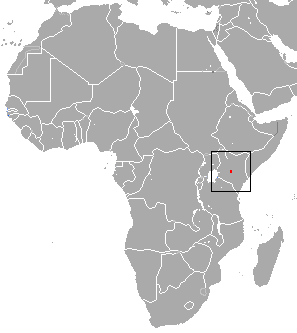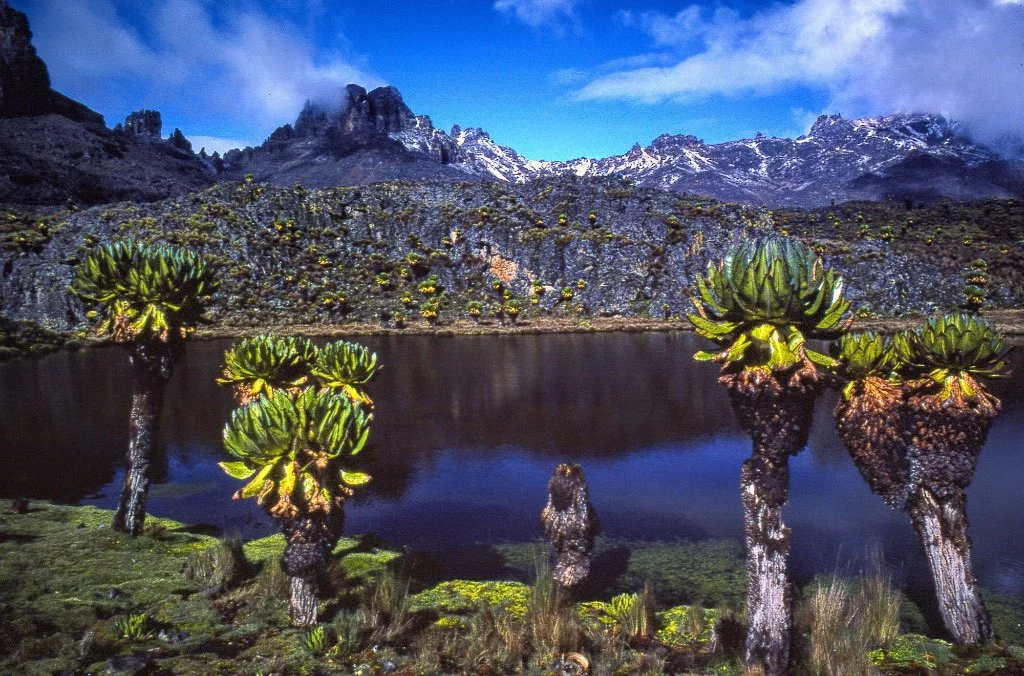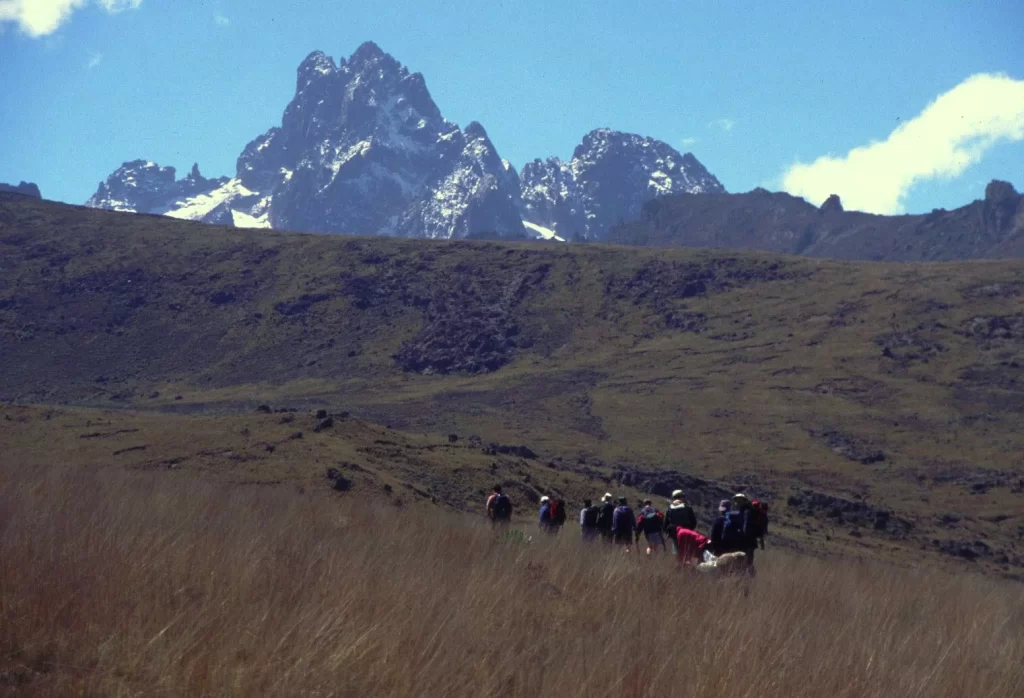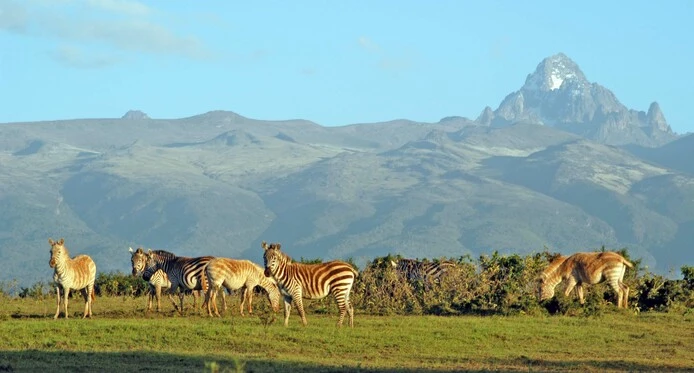Kenya has a variety of mountains which make it very unique. Such mountains include Mount Elgon, Mt Longonot and Mount Kenya. Here, we will know more about Mount Kenya.
Mount Kenya is found in the eastern region and the central region of Kenya. When we talk in terms of counties, it covers part of Meru county, Nyeri county and the northern parts of Kirinyaga county. When we relate Mount Kenya to the equator, it is about 10.3 which is equivalent to 16.5 kilometers to the southern part of the equator.

Mount Kenya has got three peaks which are Nelion, Batian and Lenana. Read on to discover more interesting things about Mount Kenya.
Why is Mount Kenya Famous?
Mount is widely known as it acts as a source of water for two major rivers in Kenya which are Tana and Ewaso Nyiro North. Mount Kenya, also being the second highest mountain in Africa, makes it popular.
Mount Kenya is a source of River Tana which is the largest river in Kenya and also the Ewaso Nyiro North river. These rivers are of paramount importance to the people of Kenya as they supply water to millions of Kenyans. River Tana is of importance as it is also used to generate electricity for many people. There are various hydroelectric power stations and dams which have been established along the river to generate electricity. River Tana is divided into tributaries which supply water to many places in Kenya.

Mount Kenya is the highest mountain in Kenya and the second highest mountain in Africa with a height of 5199 meters. In Africa, it comes second after Mount Kilimanjaro which is in Tanzania. Mount Kenya has three peaks which are Nelion, Batian and Lenana. Of the three peaks, Batian is the highest followed by Nelion and then Lenana.
The mountain is regarded as a holy place by the surrounding communities such as the Kikuyu and Meru. These communities perform their rituals at the mountain as they believe that their god Gikuyu and Mumbi reside at the mountain.
What Else Is Found In This Region?
Despite the proximity of Mount Kenya to the equator, there are tarns, glaciers and lakes on the mountain. Although there are still glaciers in the mountain, their number is reducing at a worrying trend mostly due to the fluctuations in temperatures. The glaciers present for now are Northey, Krapf, Gregory, Lewis, Diamond, Darwin, Forel, Heim, Tyndall, Cesar and Josef. Of all these Lewis is the largest glacier. Tarns are small, circular lakes. Some of the tarn lakes are Lake Alice, Lake Rutundu and Lake Hotel.

Can Tourists Visit Mount Kenya?
Yes, tourists can visit Mount Kenya.
Mount Kenya was certified by the government of Kenya as a tourist destination to protect the wild animals which are in the area and also to preserve the diverse vegetation and the environment in the area. Tourists who visit can opt to climb the mountain or they may visit the park.
Tourists can travel to Mount Kenya either through road transport or even by air transport. There are airstrips nearby in Nanyuki and Nakuru. Also, some of the lodges in the area have airstrips nearby. There is also a well-maintained road network which can be used by tourists.

Climbing Mount Kenya
There is nothing as enjoyable as climbing a mountain and especially climbing the second highest mountain in Africa. For any tourist wishing to climb Mount Kenya, the Lenana peak which has a height of 4,985 meters is the most preferable climb. It is the shortest of the three peaks of the mountain. For one to climb the Nelion and Batian peaks one needs some advanced climbing skills as the area can be very rocky.
Due to the height of the peaks, it is important to be calm as you climb to prevent illnesses due to the high altitude. Climbing Mount Kenya can take an average of 4,5 or even 6 days.
Mount Kenya can be climbed at any time of the year but there is the time when the weather is superb. The weather is perfect from January to March and also from June to October since at this time it is dry. It is advisable not to climb when wet as the terrains can be slippery at times.
Mount Kenya National Park

Originally, the area was only regarded as a forest reserve. Mount Kenya National Park was established around the mountain as a way of protecting the wild animals in the area, the vegetation and also the birds and insects. The Park also acts as protection for the great rivers which supply water to a large number of people in Kenya.
The park has a total area of approximately 715 square kilometers. There is also a forest reserve which occupies about 705 square kilometers. Surrounding the park which prevents human-wildlife conflict between the elephants and the surrounding community.
Is Mount Kenya Still Active?
No, Mount Kenya is not active. It has been an extinct volcano for a long time now.
The mountain was created as a result of a volcano eruption which took place about 3 million years ago. At this time the mountain was considered to be 7000 meters. This means at this time it was even higher than Mount Kilimanjaro itself. It was only after the eruption that led to the creation of the slopes and valleys. This took place at the time when the rift valley was opening. As of now, Mount Kenya can only be described as a stratovolcano which means it consists of many layers of solidified larvae and tephra. When the mountain erupted many years ago the larvae flowed out and cooled when it had not gone too far as it was highly viscous.
After the mountain became extinct, glaciation has taken place which can be proved by the presence of two moraines below the glaciers. The lower one is about 3300 meters below. Today the glaciers do not exceed a depth of 4650 meters.
